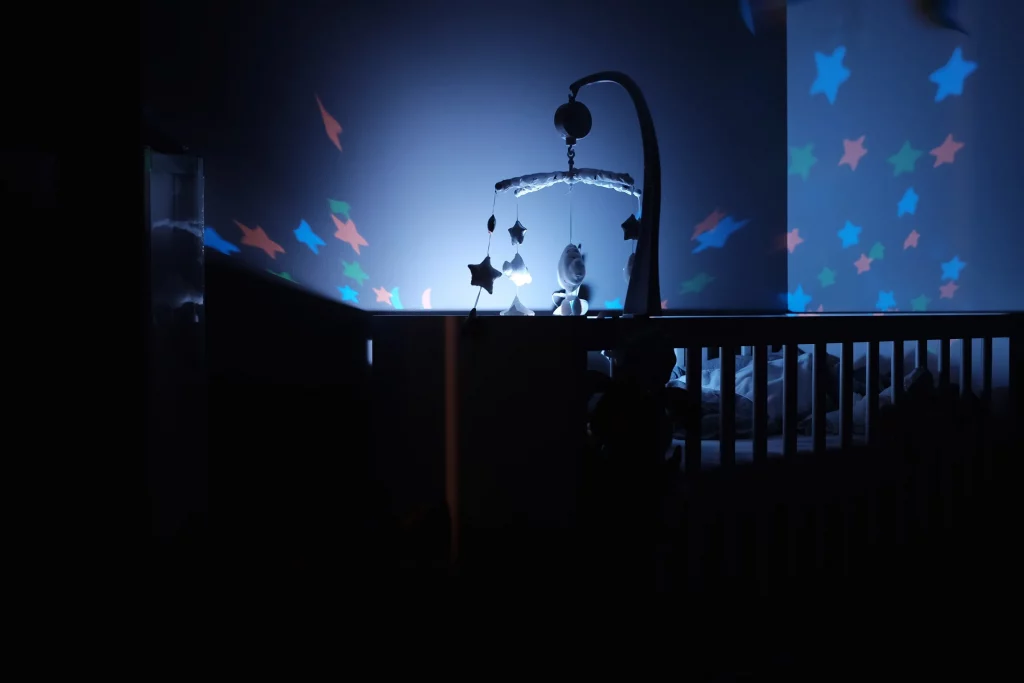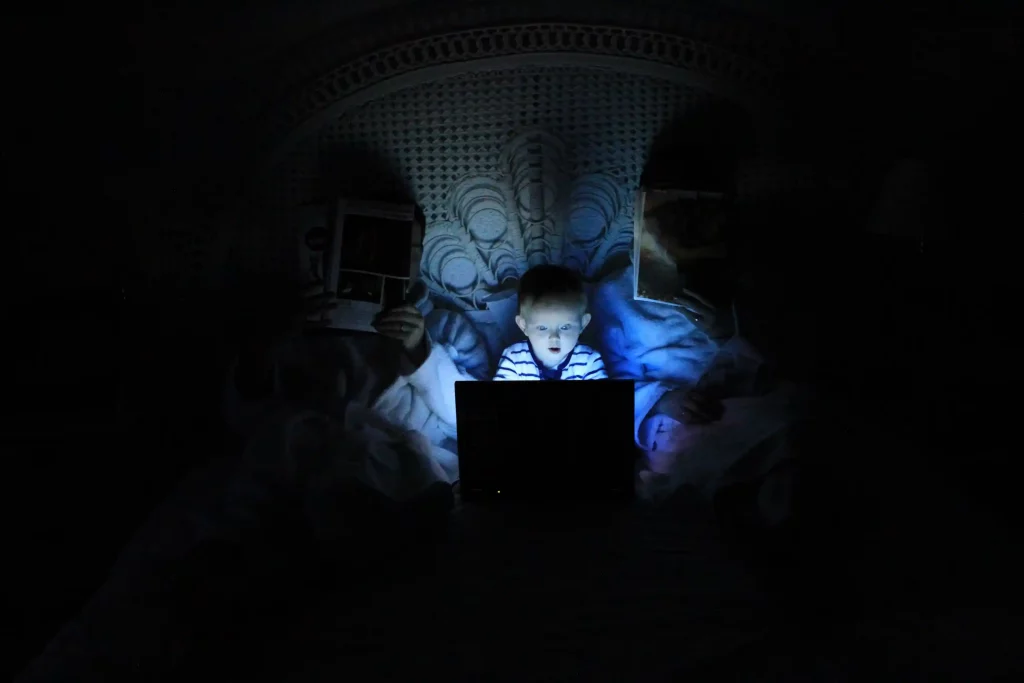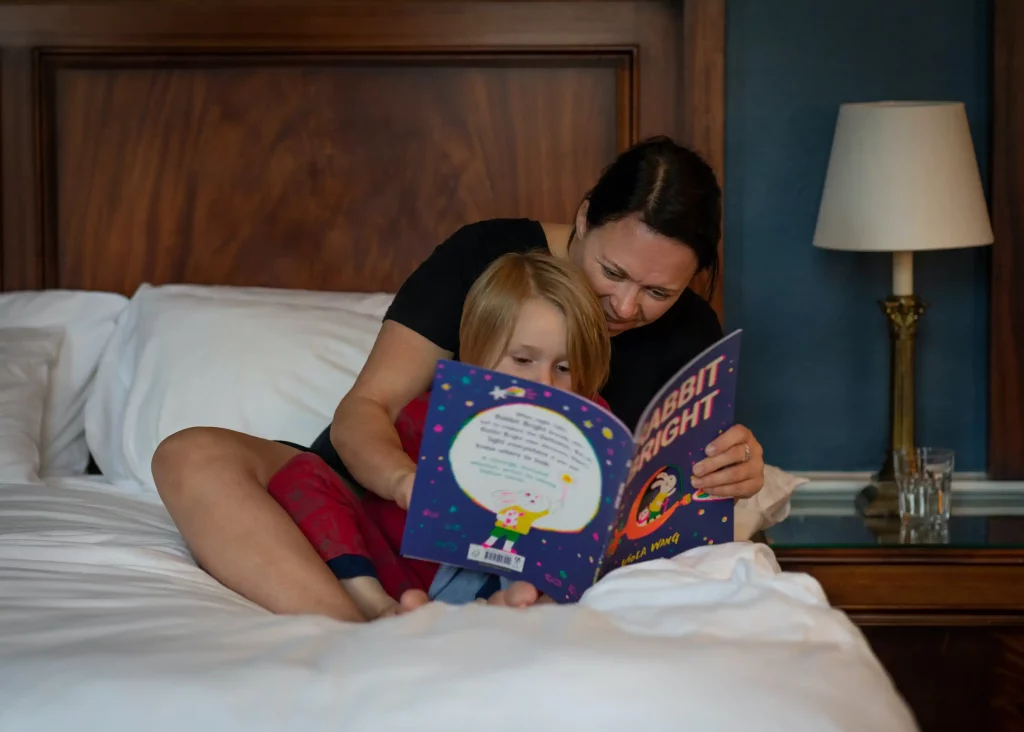
Short Version – Key Points
Babies – There’s no need for a baby night light. Night lights are usually there to make life easier for parents changing nappies and night feedings.
Toddlers and older children – Studies have shown that children can start having nightmares as young as two. If they are having sleep issues, it may be better to have one if it soothes them. Likewise, if they do already have one, taking it away could cause more problems.
Before bed – Create a nice environment, and read them a book. Get them into a routine.
So what’s the issue with night lights? Melatonin suppression can affect sleep and, ultimately, it can disrupt circadian rhythms, a natural process that responds to light and dark.
Are all night lights bad? It is suggested that some are worse than others. Bad – blue, white, and green. Better – amber, red, orange, and yellow (warm colours) are suggested. Try and keep them dim and away from your child, as even low levels of light can have an effect.
Long version
Should you use a night light in your child’s room?
There is a lot of debate on whether children should sleep with a night light. Some say that it helps their child feel more secure, while others worry about the potential effects of light exposure at night. In this article, we’ll take a look at the science behind the debate, and you can decide whether or not night lights are right for your child.
What does the science say?
A recent study that tracked light exposure and sleep quality suggests that light, even dim ones before bed, has a melatonin-suppressing effect on children. Melatonin is a natural sleep hormone produced by your pineal gland that helps regulate your sleep-wake cycle. It can send a message to our brains to get ready for sleep. The study of 36 preschool-aged children ( 3-5 years old) found that those exposed to light before bed had significantly lower melatonin levels and were highly sensitive to light exposure. They also found that melatonin remained suppressed for 50 minutes in the majority of children.
They concluded that light, even dim light, could play a key role in the development of sleep problems in children.
While this study is obviously small and more research needs to be done, it does raise some concerns about using night lights with young children.
What about nightmares?

It has been reported that toddlers as young as 18 months can get nightmares. However, they are more common in children over 2 and tend to peak between the ages of 3 and 6, with a quarter of children experiencing some form of night terror once a week. At this age, they are more likely to be crying out of discomfort, from teething pain, or needing their nappy changed. A night light won’t stop your toddler from having a nightmare, but it will give you the chance to comfort them and help them back to sleep if they do wake up at night.
There’s very little evidence to suggest that babies get nightmares. They are fine sleeping in the dark.
What if your child is afraid of the dark?
Some children are afraid of the dark. However, this tends to be a learned response rather than an innate fear. These fears may come from stories or movies they have seen, or from things they have heard from other children. We try as parents not to instil these fears in our children, but sometimes it can be difficult to avoid and beyond our control. You could help your child to overcome their fear by gradually introducing them to the dark. For example, you could try reading a book together in the dark using a torch. If your child is genuinely afraid of the dark and struggles to sleep at night, a night light may help them feel more secure and ease their fears. If these fears continue, you should speak to your GP.
Create a nice sleeping environment.
Babies and toddlers provide a number of sleep challenges, but there are a few things you can do to create a nice sleeping environment for your child, night light or not. Make sure their bedroom at night is at a nice temperature for them, with no electronics or screens around, as these can stimulate the brain and make it harder for toddlers to sleep. Get their favourite teddy or soft toy out for them to help them relax. Creating a bedtime routine can also be helpful, such as reading a book together before sleep or singing a lullaby.

Still, need a light? What’s the best lighting to use?
If you decide that you still want to use a night light in your child’s room, there are a few things you can do to minimise the potential effects. Make sure the light is dim and not too close to their bed. Try and turn it off once they are asleep.
Red and warm colours
- Amber, red, orange, and yellow (warm colours) tend to have the least effect and tend to be quite calming. So you may want to consider using one of these colours.
- It is said that red light has the least effect on nighttime sleep due to its unique wavelength characteristics, so if you think a night light would help, a dim red light could be an option.
Blue and white lights
- Stay away from blue lights, white, and green lights, as these tend to disrupt melatonin production and inhibit sleep the most.
- Studies have shown the light emitted can pass through eyelids and have an effect, so if you must have a room light, stay away from these.
Conclusion
So there you have it, the science of using night lights in children’s bedrooms! Night lights can be a contentious issue for many parents and a subject of debate, but what you decide to do is up to you, and there’s no real right or wrong answer, as there might be circumstances when one is necessary. If it helps get your toddler to sleep or they are prone to night waking or suffering from nightmares, then adding a night light for comfort might be helpful and help them sleep better. However, the science is there; exposure to light can have an impact. So if your child can sleep without light, then a dark room is considered optimal for a child’s sleep. If that’s not possible, a dim night light, preferably red, would be better. Get your child into good sleep habits and keep any type of bright light to a minimum before bed.
References
https://www.romper.com/parenting/should-toddlers-sleep-in-the-dark
https://onlinelibrary.wiley.com/doi/10.1111/jpi.12780
https://www.betterhealth.vic.gov.au/health/healthyliving/sleep-children-and-nightmares
https://www.health.harvard.edu/staying-healthy/blue-light-has-a-dark-side
https://www.babysleepscience.com/single-post/should-you-use-a-night-light-in-your-child-s-room






